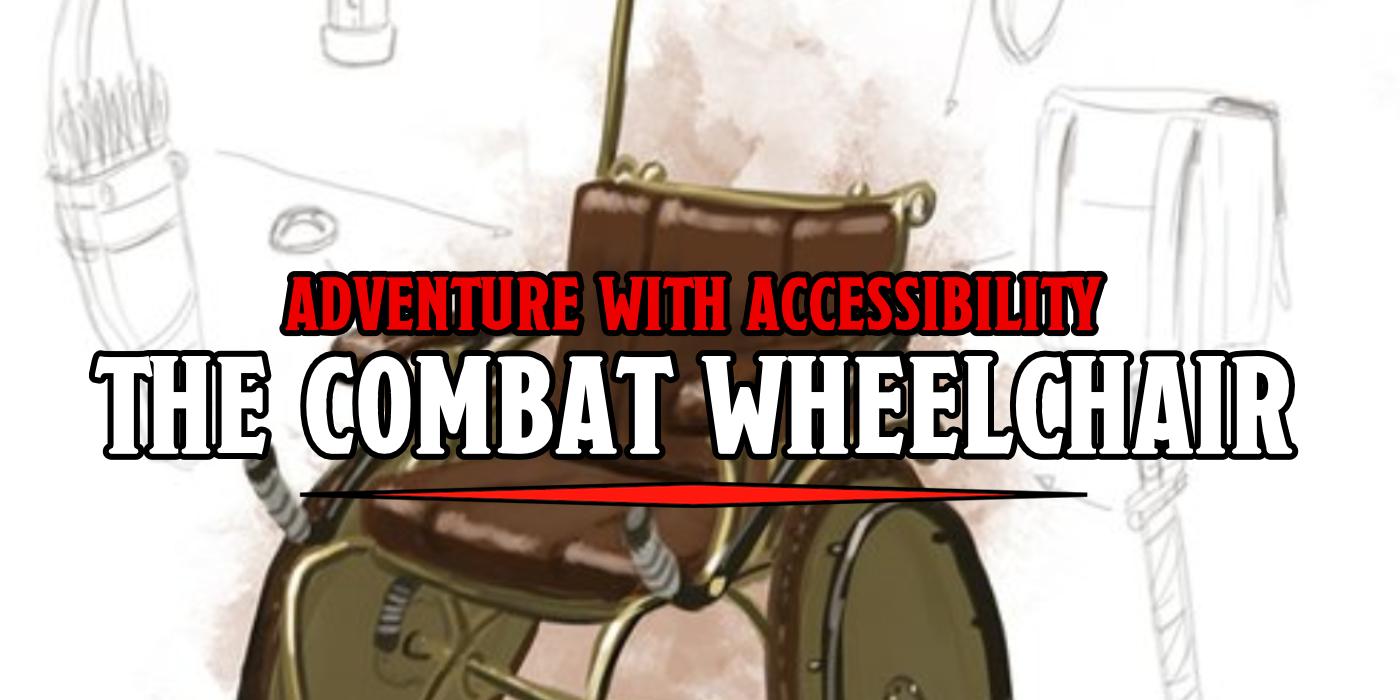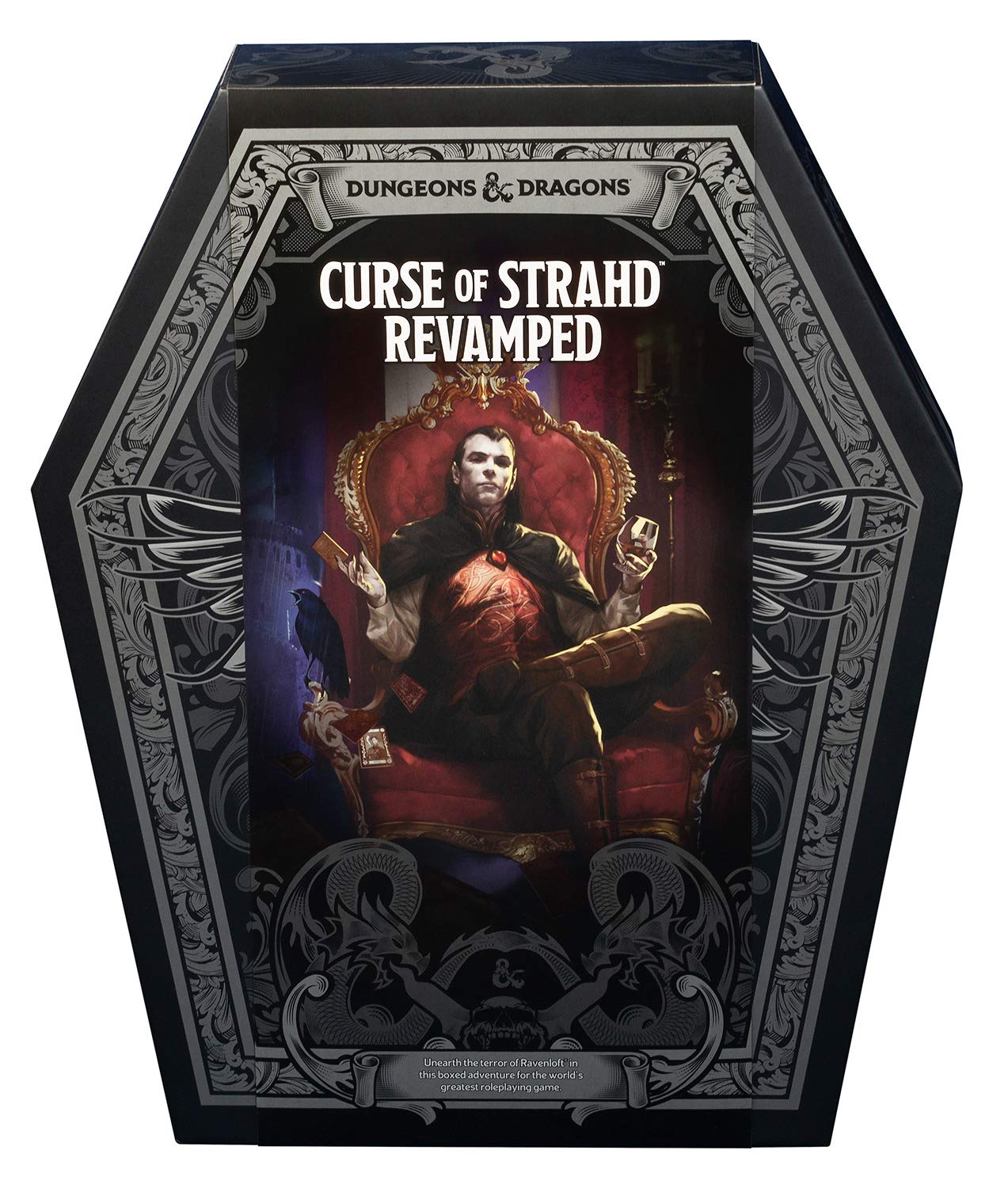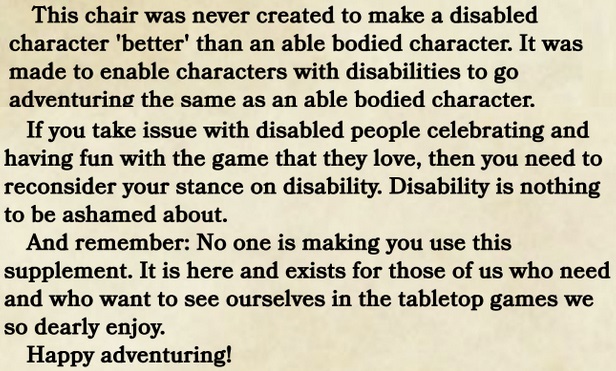D&D: Combat Wheelchair Makes Splash With WotC Staff, Critical Role’s DM, But Not All Agree


D&D has a combat wheelchair now, much to the delight disabled gamers, WotC Staff, and Matt Mercer–but not everyone is on board.
When it comes to representation in any genre, but especially fantasy, disability is one of the most often overlooked approaches. From literature to movies and TV to games, you might be hard-pressed to find more than a handful of characters. That seems to be changing, with characters like Dragon Prince’s General Amaya or She-Ra and the Princesses of Power’s Entrapta providing some fairly positive, popular examples–joining characters like Bran Stark and Sand dan Glokta who have been rare, but standout examples for years now.
Yeah, we’re gonna fix that. #wotcstaff https://t.co/stjhBa4r4i
— Christopher Perkins (@ChrisPerkinsDnD) April 29, 2020
Even in D&D it can be hard to find characters with a disability–one notable example is Ezmerelda in Curse of Strahd. She is an NPC who lost a leg in a werewolf attack and has replaced it with an artificial prosthetic. Chris Perkins addressed impending changes about this character in particular well before D&D’s big Diversity Statement, and in the upcoming Curse of Strahd: Revamped, players and DMs alike will have a chance to see the changes in action.
Which brings us to the weekend, when Sara Thompson aka @mustangsart, a disability in gaming advocate who writes for R. Talsorian Games, and has written plenty about adapting and portraying disabled characters in tabletop games, released a homebrewed combat wheelchair for use in 5th Edition.
The Combat Wheelchair (v2.0) for 5e #dnd
New upgrades, cleaner rules, sleeker design, FAQs and more – and still completely free! You have access to a book and a dyslexic-friendly font version!https://t.co/MXnvh7Z13t#disability #dnd
(audio available soon)
Art: @claudiopozas pic.twitter.com/7UKsnnWJ30— Mark Thompson 🏳️⚧️ @ combat ♿ for Pathfinder 2e! (@mustangsart) August 7, 2020
It quickly took off, attracting the attention of WotC staffers
People will always innovate to overcome their challenges. Including adventurers in #dnd. #WotCStaff https://t.co/bFdtFqdUpi
— Dan Dillon (@Dan_Dillon_1) August 7, 2020
And Critical Role’s DM, Matt Mercer:
I mean, it’s pretty badass.
Advertisement— Matthew Mercer (@matthewmercer) August 7, 2020
…and artists, like @claudiopoza, who designed the artwork featured in the header image for this article:
@claudiopozas has so very kindly drawn the Combat Wheelchair I made for #dnd 5e in its very basic form! I am so touched and definitely cried a little bit to see this in my inbox 💜♿️#disability #ttrpg pic.twitter.com/EZdw5LyAC8
— Mark Thompson 🏳️⚧️ @ combat ♿ for Pathfinder 2e! (@mustangsart) August 5, 2020
And it’s not hard to see why. The Combat Wheelchair is a 7-page work that addresses every part of how a wheelchair might function in combat. Drawing inspiration from chairs used in basketball and rugby, the Combat Wheelchair is an option for players who want to have characters with a physical disability still enjoy the same adventures as a fully-abled character. To that end, Thompson designed the chair with portability and ease of use in mind. It can ascend and descneed stairs, be used to make attacks like ramming, or striking with a wheel, and can even be upgraded with magical enhancements. It’s everything you need for better representation in your game–which is why its creator made it:
At the end of the day, it’s all about seeing yourself in the game you love. And having cool powers like thunder wave or magical spider legs that allow you to climb on walls, increasing your base speed from 25 ft. to 40 ft. as long as you’re climbing. However, as we’ve repeatedly seen, representation is a thorny issue, especially with folks who claim that having a fantasy wheelchair in a game with magic and dragons is somehow too unrealistic.
Actually in D&D, it does. Clerics can regenerate missing limbs for 50GP in 1 hour 2 minutes. Whereas this Combat wheelchair costs from 20 to 215GP.
— Pataphor (@Pataphor1) August 5, 2020
Regenerate, the spell in question here, is a 7th level spell, and requires a 13th level Cleric to cast.
Not even a little bit. The easiest example is a missing limb. That takes a 7th level spell, regenerate, to recover. That's beyond the practical scope of even most adventurers since it requires a 13th level caster.
Paralysis is less defined, but as a DM I treat it similarly.
— Dan Dillon (@Dan_Dillon_1) August 8, 2020
And that doesn’t take into account people who might have been born with their disability, and so on. Not that every character is designed with this in mind, but in a game that’s about playing a hero, you can see how someone would want “someone like me” to be seen as a capable adventurer.
It is very badass and I cried when I saw it-
I CAN PLAY A DND CHARACTER WHO IS LIKE ME NOW!!!!!!
— Wheelchair 💙♿️💙 Hero (@wheelchair_hero) August 7, 2020
Others were worried about how overpowered the item might be “in the wrong hands.”
https://twitter.com/aarakocra84/status/1292110354345013248
The community seems at odds with itself, which is where content like this comes into play. As Thompson puts it, WotC has the power to sway opinions:
The rampant ableism in the D&D community is why I wish @Wizards_DnD would just hire disabled folks to write mechanics and items for the game. They could put them out as Unearthed Arcana, etc. But they don't. It's frustrating bc they, as a company, could sway community opinions.
— Mark Thompson 🏳️⚧️ @ combat ♿ for Pathfinder 2e! (@mustangsart) August 5, 2020
The discussion continues, as ever–and so does the work. Thompson has said she’ll continue to work on the Combat Wheelchair, and the content will remain freely available. If you want to support her, she runs a patreon where you can get early access to all content.
What do you think of the wheelchair? Do you have disabled characters in your game? Where does that fit into your world? Let us know in the comments!




